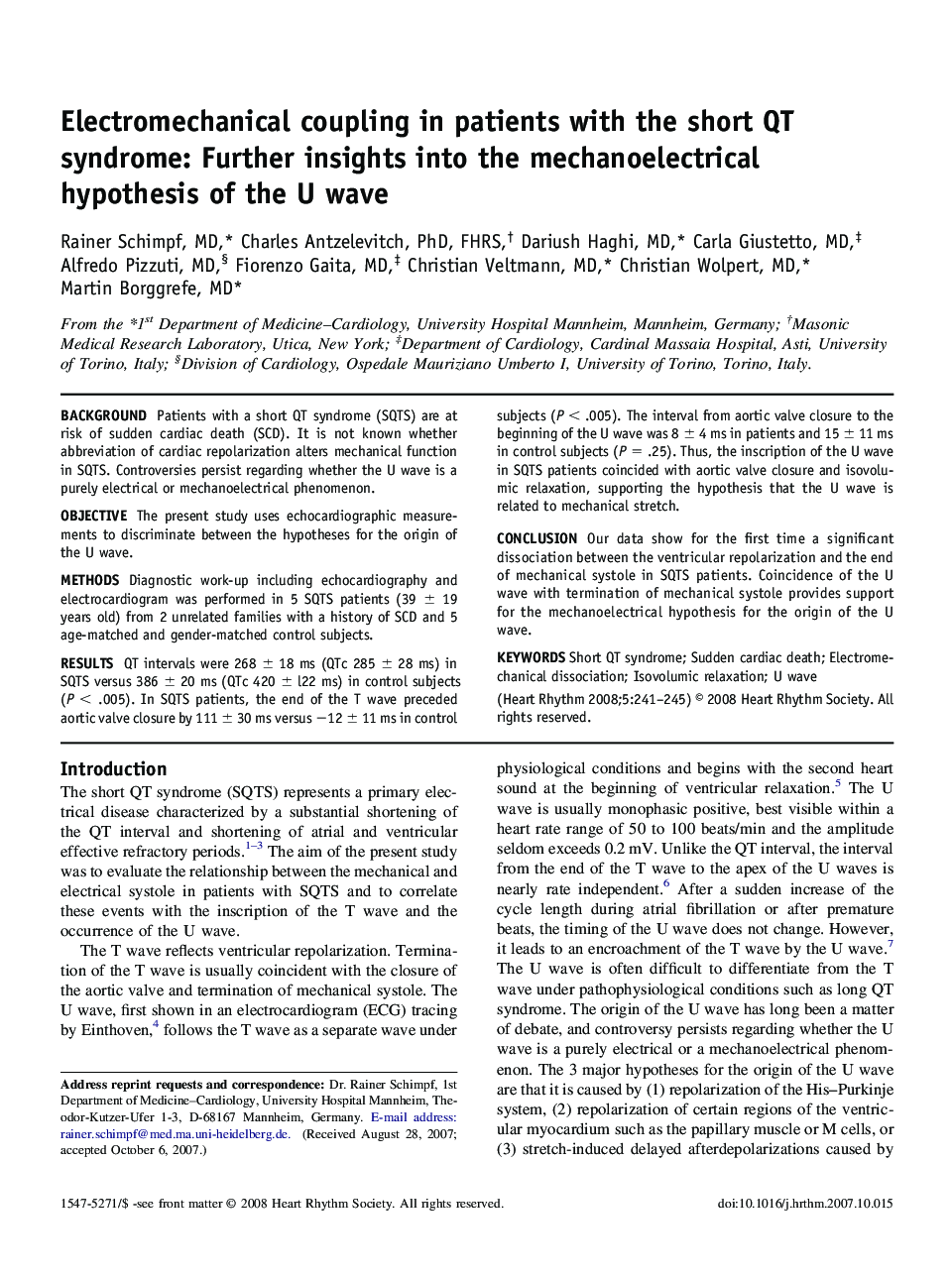| Article ID | Journal | Published Year | Pages | File Type |
|---|---|---|---|---|
| 2924512 | Heart Rhythm | 2008 | 5 Pages |
BackgroundPatients with a short QT syndrome (SQTS) are at risk of sudden cardiac death (SCD). It is not known whether abbreviation of cardiac repolarization alters mechanical function in SQTS. Controversies persist regarding whether the U wave is a purely electrical or mechanoelectrical phenomenon.ObjectiveThe present study uses echocardiographic measurements to discriminate between the hypotheses for the origin of the U wave.MethodsDiagnostic work-up including echocardiography and electrocardiogram was performed in 5 SQTS patients (39 ± 19 years old) from 2 unrelated families with a history of SCD and 5 age-matched and gender-matched control subjects.ResultsQT intervals were 268 ± 18 ms (QTc 285 ± 28 ms) in SQTS versus 386 ± 20 ms (QTc 420 ± 22 ms) in control subjects (P < .005). In SQTS patients, the end of the T wave preceded aortic valve closure by 111 ± 30 ms versus −12 ± 11 ms in control subjects (P < .005). The interval from aortic valve closure to the beginning of the U wave was 8 ± 4 ms in patients and 15 ± 11 ms in control subjects (P = .25). Thus, the inscription of the U wave in SQTS patients coincided with aortic valve closure and isovolumic relaxation, supporting the hypothesis that the U wave is related to mechanical stretch.ConclusionOur data show for the first time a significant dissociation between the ventricular repolarization and the end of mechanical systole in SQTS patients. Coincidence of the U wave with termination of mechanical systole provides support for the mechanoelectrical hypothesis for the origin of the U wave.
